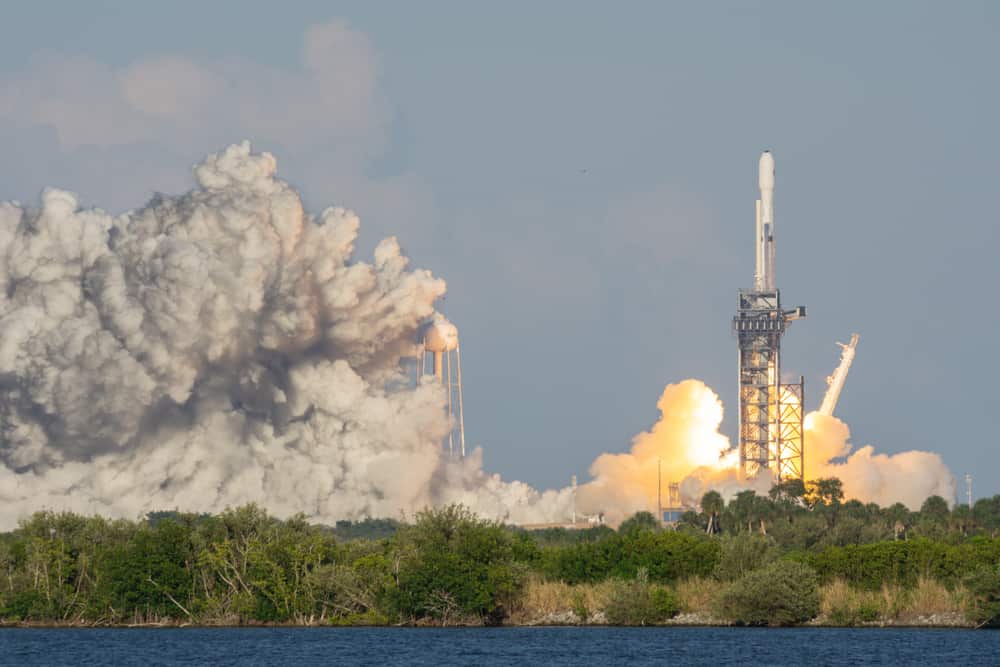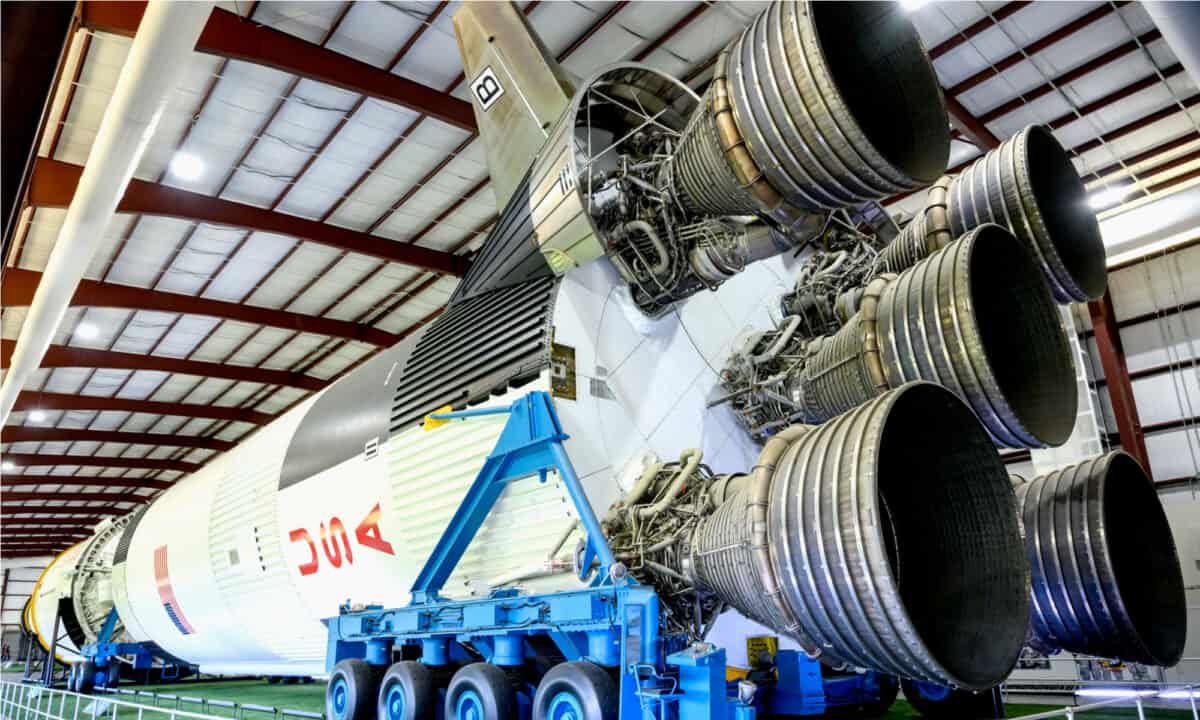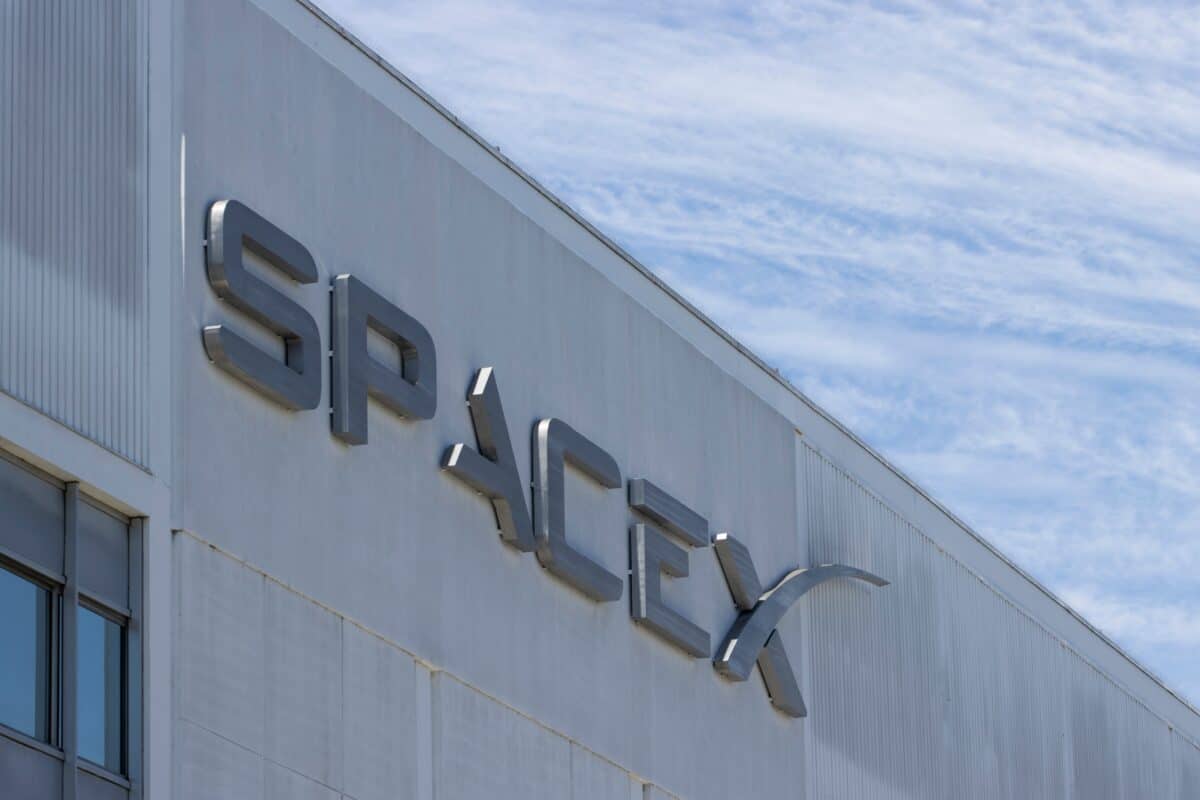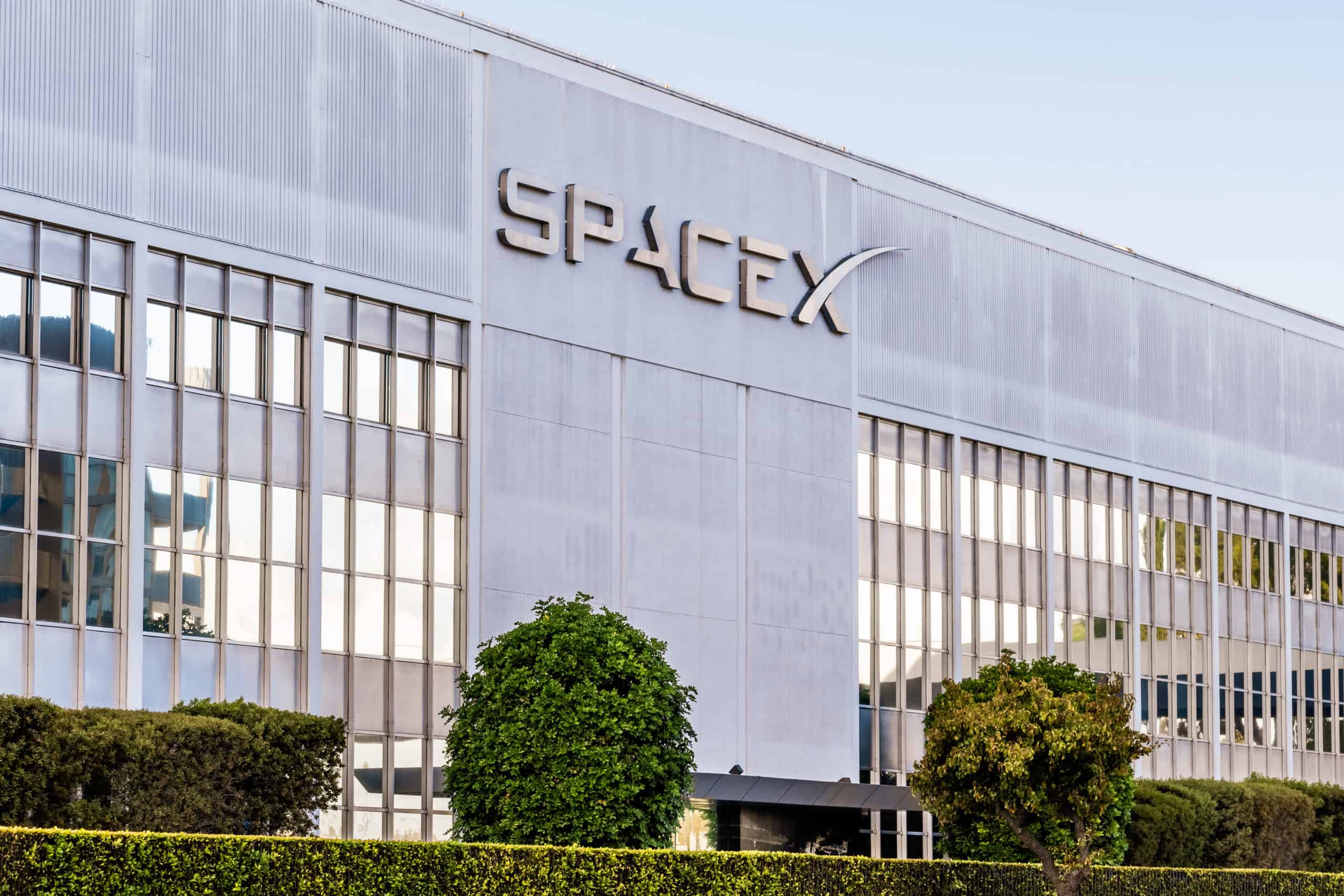On December 13, 1972, Commander Eugene A. Cernan took humanity’s last steps on the Moon. Apollo 17 marked the end of NASA’s crewed lunar missions. Nearly 50 years later, in 2021, the spaceflight agency announced the Artemis Program, finally attempting to return. However, it’s not the only organization attempting to make the journey.
For the last 20 years, SpaceX has staked a claim against NASA with state-of-the-art technology. Their newest project, Starship, is slated to be the largest rocket ever built. Not only will it go to the moon, but it will explore Mars as Musk intends.
So, which organization will win the space race? Continue reading for everything you need to know about SpaceX vs NASA.
SpaceX vs. NASA: Side-by-Side Comparison
| SpaceX | NASA | |
|---|---|---|
| Founded | March 14, 2002 | July 29, 1958 |
| Purpose | Colonize Mars, make spaceflight more affordable | Explore air and space, innovate for humanity, inspire the world |
| Headquarters | Hawthorne, California | Washington, D.C. |
| Owner | Elon Musk | United States (Charles Bolden – Administrator) |
| Employees | 12,000+ | 18,100+ |
| Notable rockets | Falcon 1, Falcon 9, Falcon Heavy, Starship | Explorer 1, Saturn V, Titan, Delta, Atlas V, Space Shuttle, SLS |
| Achievements | First rocket booster landing, first space company to reuse a rocket, first private company to send and dock a spacecraft to the ISS | First human to land on the moon, rovers on Mars, reusable spacecraft, first manmade object to pass through the asteroid belt |
SpaceX vs NASA: 8 Must-Know Facts
SpaceX
- Founded in 2002 by Elon Musk.
- Starship is its largest rocket, although it is still being tested.
- SpaceX’s industry-changing technology makes it the most affordable spaceflight company.
- The first American organization to send humans to space since 2003.
NASA
- Founded in 1958 in response to the Soviet Union’s launch of Sputnik 1.
- The first and only organization to successfully send humans to the moon.
- Is building the Space Launch System to compete with SpaceX’s Starship.
- Has scientific focuses that scope beyond spaceflight technology.
SpaceX vs. NASA: What’s the Difference?
SpaceX History
It’s been some time since space exploration owned the national spotlight like it does today. Before the turn of the century, NASA, ESA, and other government-funded programs were the only spaceflight organizations in the industry. However, their ambitions were tame compared to the missions of the 70s. All that would begin to change in 2002, following the establishment of SpaceX.
It takes a strong belief to challenge the United States government in a space race, but Elon Musk was up for it. Selling his two software companies (Zip2 and PayPal), the entrepreneur invested nearly $100 million into the design of his first rocket. While the first attempts were shaky, Musk finally got his rocket into space and pushed forward.
Over the years, SpaceX released a variety of new equipment and technology that is changing the spaceflight industry. All of the private company’s innovations keep its primary goal in mind. Musk is set on drastically reducing the price of spaceflight to invigorate exploration and eventually establish a colony on Mars.
SpaceX Rockets

Following the initial success of SpaceX’s first rocket, the Falcon 1, the company quickly pivoted to design a bigger rocket capable of heavier payloads. Not only would this vehicle be more capable, but it would also propel the company forward with its goal of creating new technology. The Falcon 9 was introduced with nine Merlin engines and reusable boosters.
SpaceX’s new rocket proved the most affordable option on the market, and the spaceflight company earned contracts from government and commercial organizations. The Falcon 9 would relaunch over 100 times, making it the second most reused spacecraft behind the Space Shuttle. After three successful years, the company moved to its next stage, sending payloads (and humans) beyond Earth’s lower orbit.
The spaceflight company’s original plan was to take its highly successful Falcon 9 and redesign it with more boosters and a thicker shell. After five years of testing, the Falcon Heavy launched for the first time in Cape Canaveral. Its inaugural flight carried Elon Musk’s personal Tesla Roadster into space and sent it into orbit around the Sun. However, the entrepreneur’s ambitions were larger than the Falcon Heavy, and the company decided to change direction with an even bigger vehicle, Starship.
SpaceX Achievements
As SpaceX prepares to launch Starship, which can theoretically transport 100 tons of payload to Lower Earth Orbit (LEO), they can look back on a 20-year history of industry-changing achievements. In addition to building the largest rocket in history, SpaceX was:
- The first private company to launch, orbit, and recover a spacecraft.
- The first private company to send and dock a spacecraft to the International Space Station (ISS).
- The first private company to send humans into orbit.
The spaceflight company is also credited for launching a major constellation of satellites called Starlink. The project intends to send up to 42,000 satellites that will offer high-speed internet to every location on the planet.
NASA History
In the Fall of 1957, the Soviet Union launched Sputnik 1 into orbit. The event stunned Americans across the country, believing their country was more technologically advanced than their Russian counterparts. Within a year, the United States would launch its space program, the National Aeronautics and Space Administration (NASA).
The program quickly caught up, and in 1961, John F. Kennedy announced a challenge: the United States would be the first nation to put a man on the moon. Not only that, but it would happen by the end of the decade. In 1969, Neil Armstrong spoke his famous words, “That’s one small step for man. One giant leap for mankind.”
NASA has kept these words at the forefront of its mission. In addition to pursuing human exploration, the organization strives to advance aeronautics and space technology. Its advances have propelled the spaceflight agency and the Americans as a whole. The organization was a major developer in the global positioning system (GPS) weather imagery, and solar energy.
NASA Rockets

These Socioeconomic improvements are overshadowed, however, by NASA’s rockets. And it’s easy to see why. While SpaceX’s Falcon Heavy is capable of 63 tons, NASA’s historic Saturn V did twice that in 1969. The massive rocket was used to launch the Apollo missions, which brought space crews to the Moon. Until SpaceX finishes Starship, the Saturn V remains the largest rocket in history.
NASA isn’t only known for its firepower. The government program also had one of the most successful attempts at a reusable spacecraft. In 1981, NASA launched its Space Shuttle program, a fleet of four vehicles that could deliver crewmembers and payloads to the International Space Station. The vehicles were relaunched nearly 130 times before they were retired in 2011.
It’s been over a decade since NASA launched crewed missions, but with the announcement of the Artemis Program, that’s beginning to change. SpaceX isn’t the only company building a mega-rocket; NASA’s Space Launch System (SLS) intends to take astronauts to the moon. The rocket, which has a payload capacity of 95 tons, is set to launch its first test flight at the end of August 2022.
NASA Achievements
NASA’s space race to the moon in the ’60s was a success; while the Soviet Union built an equally large rocket, it was incapable of launching and discontinued. NASA was the first and only organization to land a crew on the moon, but this is only one of a historic list of accomplishments.
In addition to the moon, NASA has sent exploratory spacecraft to every planet in our solar system. The Voyager 2 visited Uranus (1986) and Neptune (1989) as it exited the solar system on its mission to interstellar space. The 44-year-old spacecraft continues to send back data to this day.
Of these planets, NASA has made significant discoveries on Mars. Over 25 years, the organization sent six robotically operated rovers to the Red Planet. After two and a half decades of scientific research, scientists have discovered signs of water and even life. These discoveries spearhead the initiative to establish a multi-planetary presence.
SpaceX vs. NASA: How They Work Together
While NASA no longer sits in the spotlight as it did in the 70s, the organization is still the leader in space exploration. In addition to the Artemis Program, which will relaunch humanity’s missions to the Moon, NASA continues to send Discovery missions to other planets in our solar system. In 2021, the organization approved two new missions to Venus, DAVINCI+, and VERITAS.
However, NASA recognizes that SpaceX offers the most affordable spaceflight technology and uses its rockets for many of its current missions. As it builds its new Gateway space station, a launch pad for research programs on the moon, NASA employed SpaceX’s Falcon Heavy to deliver the massive payloads. Outsourcing its spaceflight technology allows NASA to dedicate its tiny budget (the organization receives only .4% of federal spending) to new scientific discoveries.

SpaceX vs. NASA: Which One Is Better?
When it comes down to comparing SpaceX vs. NASA for the better spaceflight organization, it depends on what we’re comparing. As far as rocket technology goes, SpaceX has a clear advantage. But if we’re looking at space exploration in its entirety, NASA is dominant.
With SpaceX constantly in the media, it’s easy to believe that the company could replace NASA. However, spaceflight only makes up a portion of the government organization. While Elon’s rockets are surely superior, it’s because he can invest all of his earnings into a single project. But there’s no way for SpaceX to take on all the scientific missions that NASA has planned.
SpaceX Starship Updates
On April 17th, SpaceX had to cancel the launch of the Starship and reschedule it for another day. The launch site in South Texas, located near Brownsville, had to abort the countdown to the most powerful rocket ever built due to a valve issue in the booster’s pressurization system. It appeared to be frozen, leading to the cancellation of the launch.
The introduction of Starship could bring a significant change in the economic aspect of space transportation as the entire rocket would be reusable for the first time.
Elon Musk, the creator of SpaceX, has compared this new approach to air travel, stating that it would be unfeasible if airplanes were discarded after just one use. This indicates the potential for a more sustainable and cost-effective means of space travel.
Future of SpaceX and NASA
SpaceX and NASA have a documented history of collaboration, and in the future, it’s likely that they will continue to partner. The two organizations align for the major goal of further exploring space, but there are a few operational differences that could limit the future of these two entities.
NASA is a government agency, and with that comes relations and security assurances that SpaceX does not have to usually follow since it is a private company. As space exploration continues to grow and become more mainstream, NASA may choose to limit its association with SpaceX (or vice versa) to maintain competition.
The image featured at the top of this post is ©Sundry Photography/Shutterstock.com.

